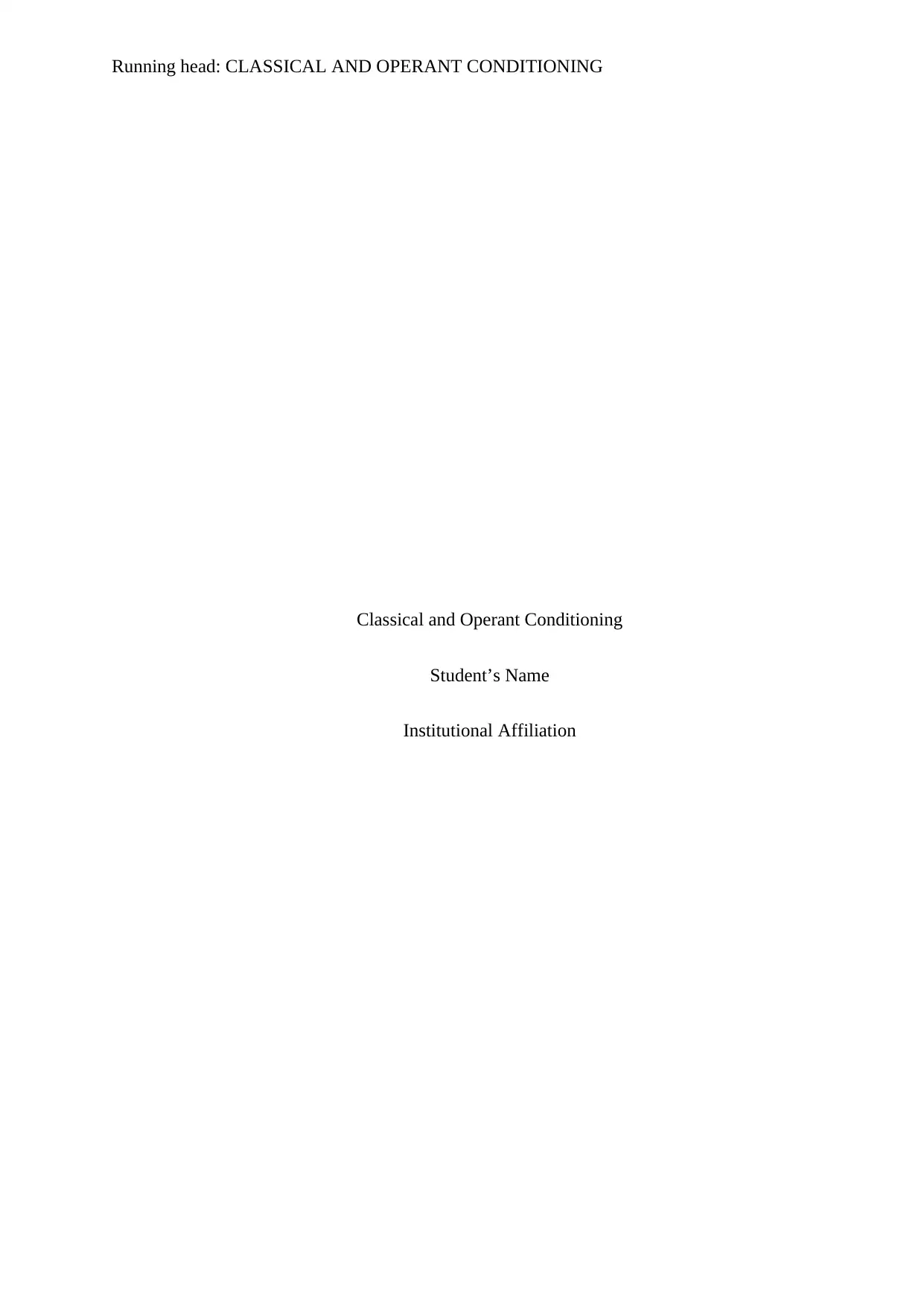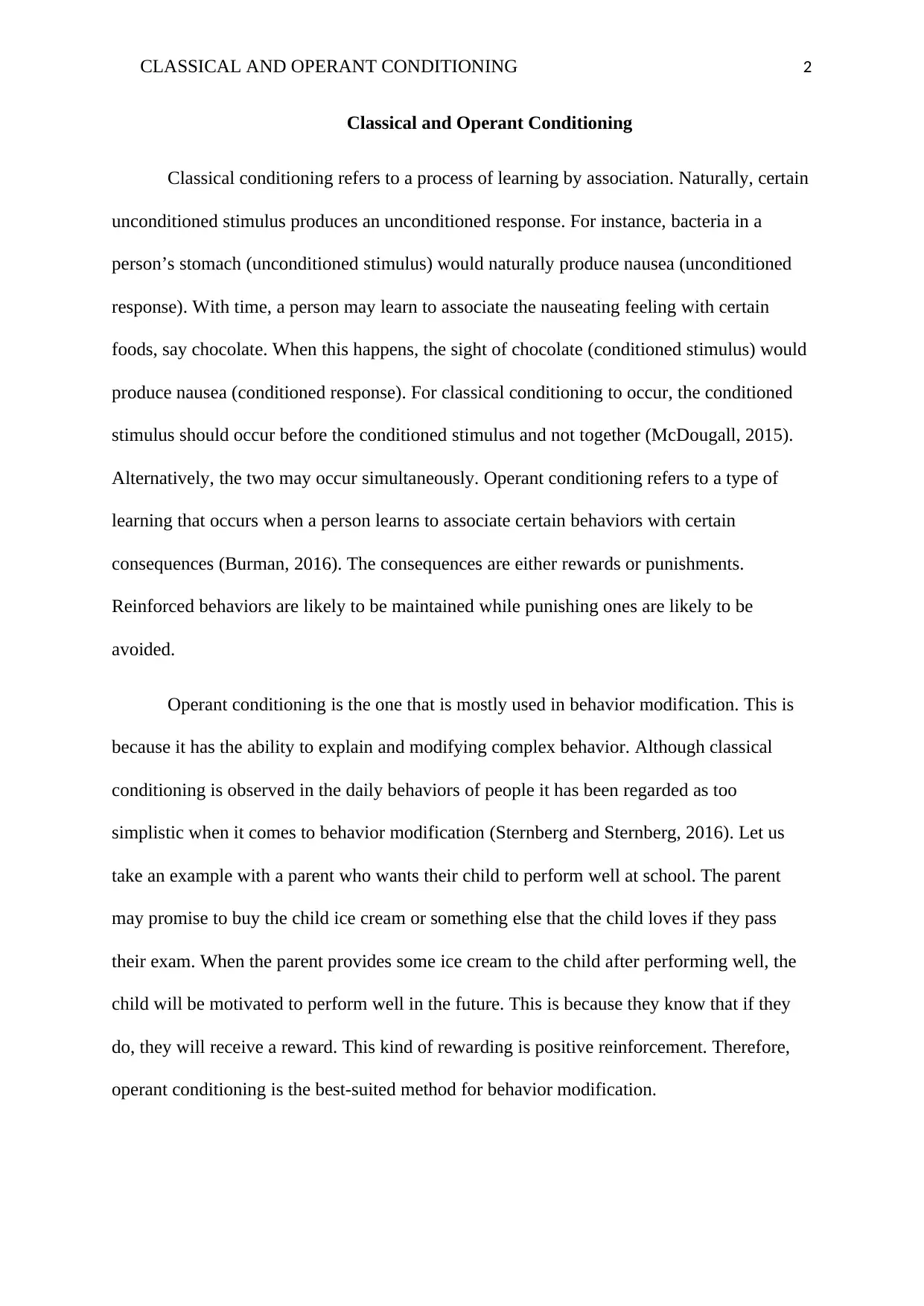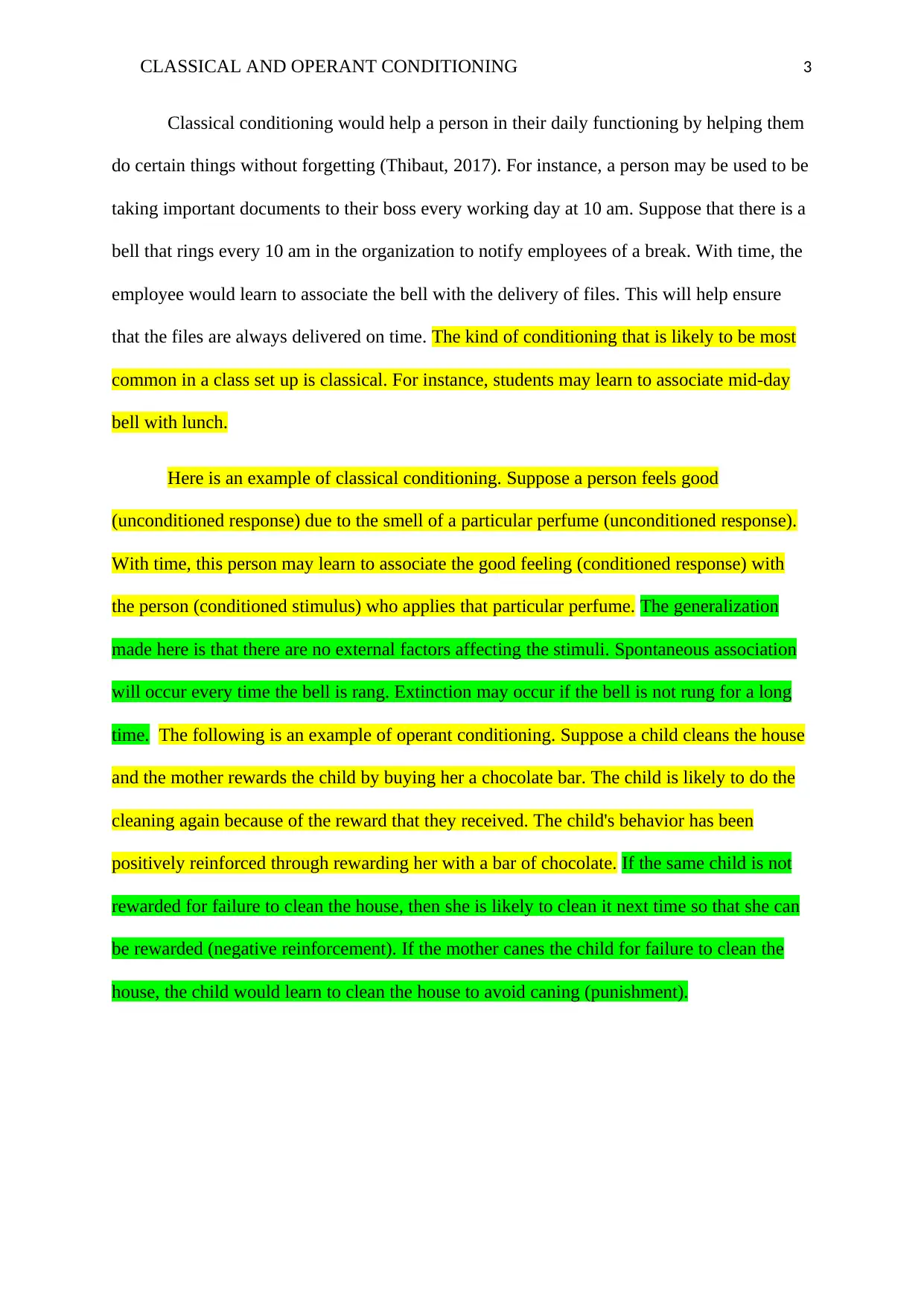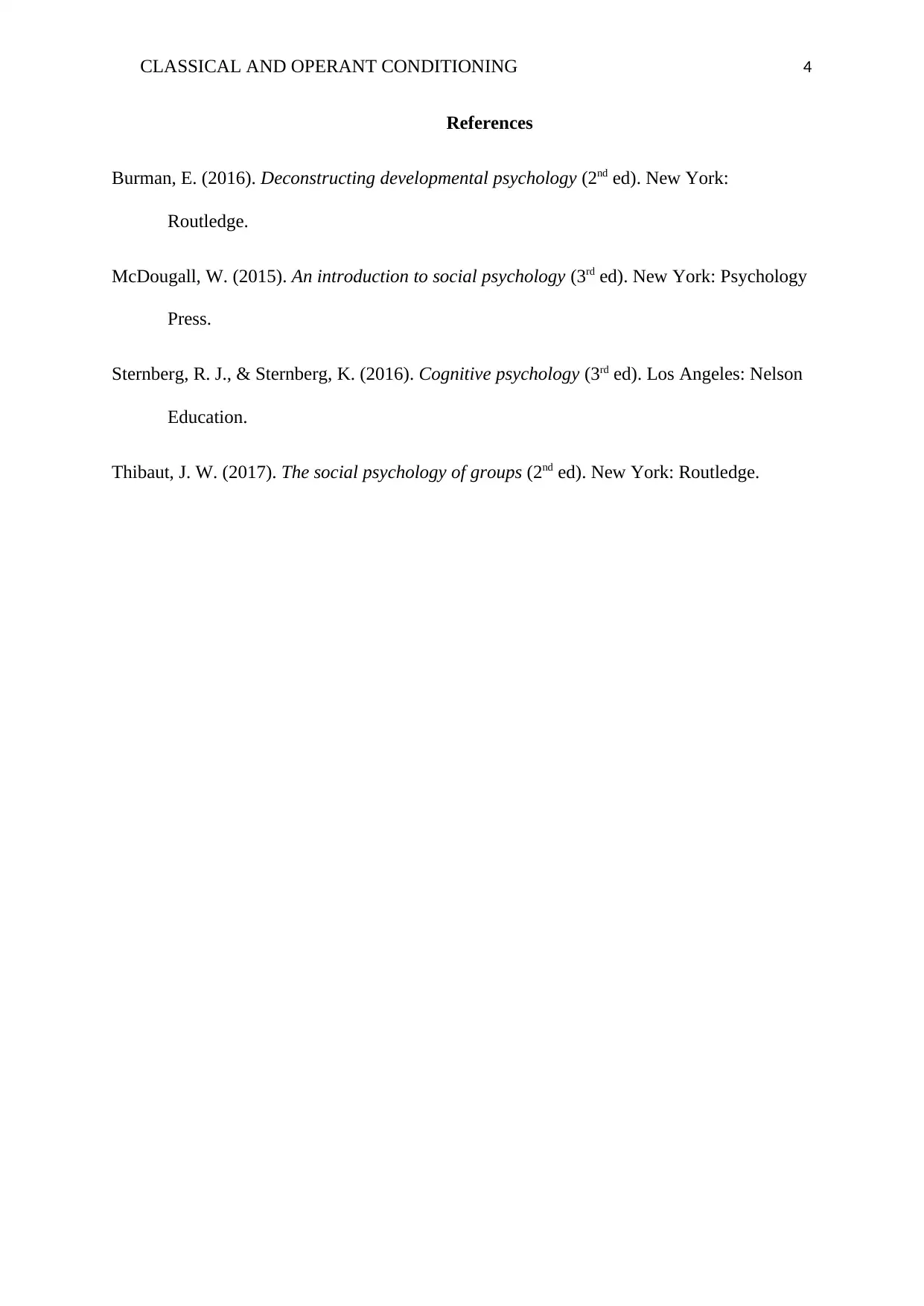Assignment on Classical and Operant Conditioning in Psychology
VerifiedAdded on 2023/01/13
|4
|810
|83
Homework Assignment
AI Summary
This assignment delves into the concepts of classical and operant conditioning. It begins by defining classical conditioning, explaining how associations are formed between stimuli and responses, and providing examples such as the link between chocolate and nausea. It then explores operant conditioning, highlighting how behaviors are learned through rewards and punishments, and how this method is primarily used for behavior modification. The assignment further examines how classical conditioning aids daily functioning, like associating a bell with a work break, and how it is frequently observed in classrooms. Specific examples are provided for both classical and operant conditioning, including identification of UCS, UCR, NS, CS, CR, stimulus generalization, extinction, and spontaneous recovery for classical conditioning. For operant conditioning, the assignment identifies negative and positive reinforcements and punishments, and labels the schedule of reinforcement or punishment. The assignment concludes with references to support the concepts discussed.
1 out of 4











![[object Object]](/_next/static/media/star-bottom.7253800d.svg)